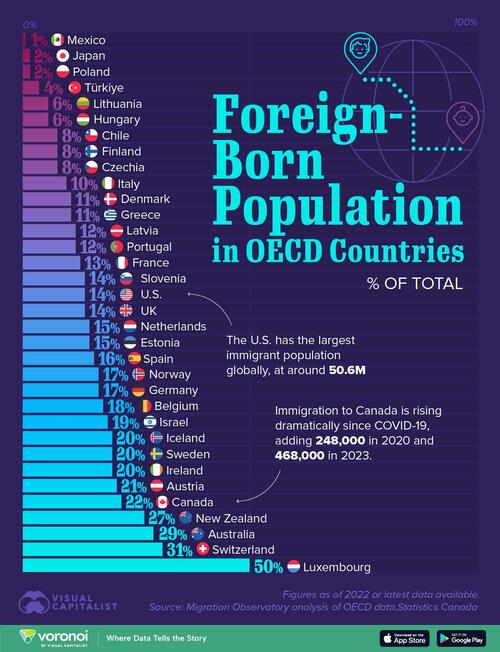
This graphic, via Visual Capitalist's Marcus Lu, measures diversity across OECD countries by their percentage share of foreign-born population. Data was accessed via The Migration Observatory at the University of Oxford , and are as of 2022 or latest available year. The OECD (Organisation for Economic Co-operation and Development) is an international organization that promotes policies to improve global economic and social well-being.
It provides a platform for governments to collaborate on issues like trade, education, and environmental sustainability. The OECD has 38 member countries. The data we used to create this graphic is listed in the table below.

Among OECD members, Mexico , Japan , and Poland are the most ethnically homogenous. Mexico’s status as a developing country means its one of the world’s largest sources of immigrants for other countries. People typically emigrate from Mexico to seek better economic opportunities in places like the United States.
Japan, has a similarly homogenous population, even though it is an advanced economy. This could be due to things like language and cultural barriers, as well as stricter immigration policies. Meanwhile, countries with the highest share of foreign-born population include Luxembourg and Switzerland , two wealthy nations with small populations and a high standard of living.
Both countries are able to attract professionals from around the world thanks to their developed industries (e.g. finance) and close ties with the European Union.
If you enjoyed this post, check out The Top Countries Losing People to Emigration on Voronoi , the new app from Visual Capitalist..















